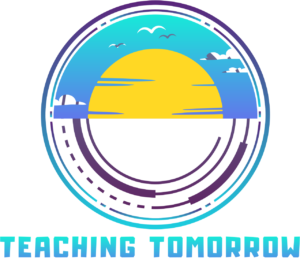
In the ever-evolving landscape of education, curriculum development stands as the cornerstone of effective learning experiences. This process goes beyond mere lesson planning, aiming to create dynamic and engaging educational journeys that empower students to explore, learn, and apply knowledge effectively. In this blog post, we’ll delve into the world of curriculum development and its role in crafting dynamic learning experiences that captivate students’ minds. Moreover, we’ll explore the synergy between innovative educational approaches and the art of SEO optimization to ensure that these valuable insights reach a wider audience.
1. Understanding Curriculum Development
At its core, curriculum development involves the intentional and systematic design of educational content, activities, and assessments to achieve specific learning goals. It’s not just about textbooks and lectures; it encompasses a holistic approach to education that considers diverse learning styles, cultural backgrounds, and individual needs. Curriculum developers, educators, and instructional designers collaborate to ensure that the curriculum aligns with educational objectives and provides a comprehensive learning experience.
2. Key Principles of Dynamic Learning Experiences
Dynamic learning experiences are marked by their ability to spark curiosity, encourage active participation, and foster meaningful connections between concepts and real-world applications. These experiences are characterized by:
- Active Learning: Students engage in hands-on activities, discussions, and problem-solving, leading to deeper comprehension.
- Real-World Relevance: Learning content is connected to practical scenarios, making it more relatable and applicable.
- Adaptability: Curricula are flexible to accommodate diverse learning paces and preferences, enhancing accessibility.
3. Steps in Designing Dynamic Learning Experiences
Research and Analysis: Effective curriculum development starts with understanding students’ learning needs and preferences. This phase involves surveys, data analysis, and discussions to gather insights.
Goal Setting and Outcome Definition: Clearly defined learning objectives guide curriculum design. These goals should be specific, measurable, achievable, relevant, and time-bound (SMART).
Content Selection and Sequencing: Relevant and up-to-date content is curated to align with learning goals. Sequencing ensures a logical flow of concepts, building upon prior knowledge.
Active Learning Strategies: Incorporating active learning methods such as group projects, case studies, and debates encourages student engagement and critical thinking.
Technology Integration: Leveraging technology tools like simulations, virtual labs, and interactive platforms enriches learning experiences and makes complex concepts more understandable.
Assessment and Feedback: Regular assessments help gauge student progress, while timely feedback guides improvements and reinforces learning.
4. Benefits of Dynamic Learning Experiences
- Increased Student Engagement: Active learning methods capture students’ attention, motivating them to delve deeper into subjects.
- Deeper Understanding and Application: Learning experiences rooted in real-world context allow students to apply concepts meaningfully.
- Enhanced Critical Thinking: Active participation stimulates critical thinking skills, enabling students to analyze, evaluate, and solve problems effectively.
- Improved Knowledge Retention: Engaging experiences lead to better information retention, ensuring that students remember and apply what they’ve learned.
5. Overcoming Challenges in Curriculum Development
While curriculum development is rewarding, it comes with challenges. Limited resources, time constraints, and resistance to change can impede progress. Collaborative efforts among educators, leveraging online resources, and gradually implementing changes can help overcome these hurdles.
6. Case Studies: Successful Implementation
For instance, the “STEAM Academy” redesigned its science curriculum to include hands-on experiments and digital simulations. As a result, student engagement and understanding of complex scientific concepts increased significantly.
Conclusion
Designing dynamic learning experiences through thoughtful curriculum development can revolutionize education. By embracing active learning, real-world relevance, and adaptability, educators can empower students to become lifelong learners and critical thinkers. Combining innovative educational approaches with effective SEO strategies ensures that these insights reach a broader audience, further enriching the educational landscape.





